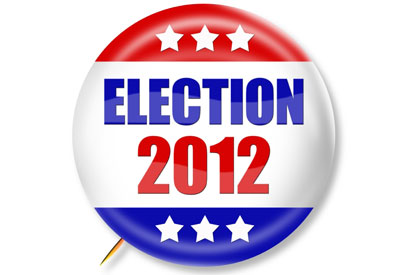California poll by IGS shows new open primary ballot boosts moderate candidates
The new “top two” ballot used in California’s primary election today (Tuesday, June 5) appears to give moderate candidates in state races a 6-7 percent boost compared to the traditional, more restricted ballot, according to preliminary results of a new study by the University of California, Berkeley’s Institute of Governmental Studies (IGS).
“It looks like voters want to vote for more moderate candidates and will do so if the ballot provides the opportunity,” said Gabriel Lenz, a UC Berkeley assistant professor of political science who led the survey for IGS.

Although more analysis and study is needed, Lenz said, still more states may adopt similar ballots if the study results hold up.
Other findings of the survey include:
- Only about 40 percent of respondents had heard about the new ballot before the survey.
- Over 70 percent preferred the new ballot to the old ballot.
- Just 8 percent said they could definitely identify the most moderate candidate on the ballot, while an additional 35 percent said they could probably identify the moderate.
Approved by California voters in June 2010, the top-two ballot is intended to help moderate candidates in a state whose legislature has been found to be the most polarized in the United States, and even more divisive than Congress.
The new ballot opens up voter choices to candidates in or out of the voter’s registered political party, and requires that the top two vote-getters in any race face off against one another in the general election, regardless of their party affiliation.
Working with IGS Director Jack Citrin, graduate student Doug Ahler and four undergraduates, Lenz and the firm Survey Sampling International conducted 4,300 online surveys of registered voters in California in the week before Election Day.
Half of those surveyed received the new ballot, and the rest were given a traditional ballot, which limits voting according to political party. When asked about voting preferences, researchers found increased support for candidates that surveyed voters judged to be ideologically moderate.
They also found that almost 16 percent of survey participants voted for a candidate from the rival party, while only about 5 percent voted for “No Party Preference” candidates.
The boost for moderates is equal to that generally attributed to incumbent politicians running for re-election, said Lenz, whose research focuses on elections, campaigns and how voters can make more informed choices. He also is the author of the forthcoming book, “FollowtheLeader? How Voters Respond to Politicians’ Performance and Policies.”
Lenz said new ways to support moderate political candidates have gained traction with an electorate that largely self-identifies as politically moderate, yet faces increasing numbers of candidates on extreme ends of the political spectrum who seem to end up producing gridlock in Congress and state legislatures.
Even so, Lenz said, the study results were surprising. “We know people are very loyal to their political parties, and getting them to cross over seems almost Herculean, even if a voter is a moderate or if the candidate is also moderate,” he added.
Some 20 of 53 Congressional races in California this year have a serious moderate candidate, while 23 have a candidate expressing a preference for no particular party. Meanwhile, 17 of 20 state senate races have more than one candidate.
Lenz said that California’s recent realignment of the geographic boundaries for Congressional and state Senate districts apparently prompted incumbents to retire and new candidates to run, some of whom take moderate stances.
“Interestingly, we actually can’t tell from the vote count whether the new ballot helped moderates, since we can’t see what would’ve happened otherwise,” Lenz said. “That’s why our experiment is exciting; it’s the best way to find out.”
This is the first of a series of IGS surveys that will examine various election reform efforts.
